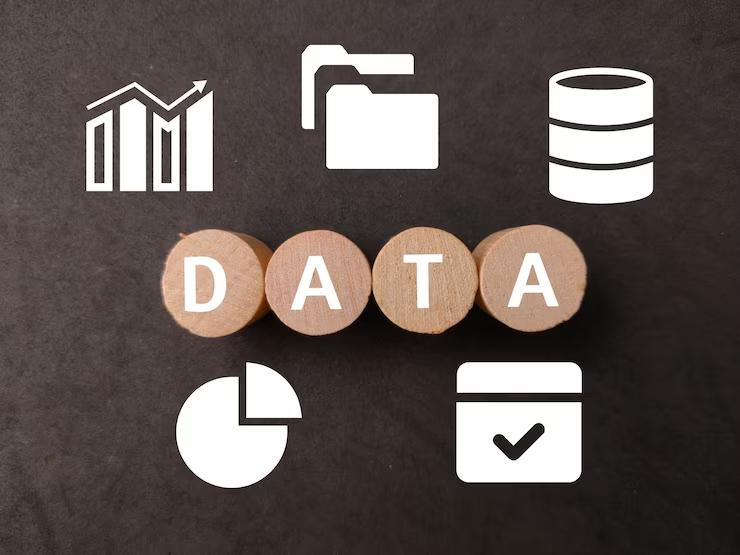Database vs Dataset: Understanding the Difference
In the world of data management and analysis, two terms that often cause confusion are “database” and “dataset.” While they sound somewhat similar, they have distinct meanings and functions in the realm of data. In this article, we will delve into the differences between these two concepts, providing clarity on their definitions, purposes, and use cases. Whether you’re a data professional or just curious about the data landscape, this article will help you grasp the nuances between databases and datasets.
Defining Databases and Datasets
Before we dive into the differences, let’s start by defining what a database and a dataset are:
Database
Picture a virtual fortress that guards an intricate treasure trove of information, allowing seamless access, manipulation, and exploration. This is a database. At its core, a database is an ingeniously structured reservoir of data, meticulously arranged and supervised to facilitate efficient retrieval, modification, and analysis. Much like the orchestration of a symphony, databases conduct a harmonious interplay between data elements, ensuring data integrity, security, and concurrency – essential traits for handling immense volumes of information.
Let’s revel in the beauty of a table to elucidate this further:
| ID | Name | Age | Occupation |
| 1 | Alice | 28 | Engineer |
| 2 | Bob | 32 | Analyst |
| 3 | Carol | 25 | Designer |
Imagine this table as the cornerstone of a database. Rows represent individual data entries, while columns symbolize distinct attributes. Each data point harmonizes with the rest, creating an environment where searching, filtering, and analyzing data becomes a breeze. It’s akin to navigating a labyrinth with well-marked trails and illuminating signposts.
Dataset
Now, shift your focus to a single facet of this wondrous database realm – the dataset. A dataset is like a curated collection of rare artifacts within a museum, each piece intricately connected to a specific narrative or puzzle. This subset of a database gathers data records or observations, encapsulating information tailored for a particular problem or analysis. Datasets transcend various forms – they could be presented as spreadsheets, CSV files, JSON files, or even cozy tables nestled within a database.
Visualize the enchantment of a bullet list as we venture deeper into datasets:
- A dataset encapsulates a slice of reality, preserving the essence of a specific context or research question;
- It’s akin to assembling a bouquet of flowers, carefully selecting blooms that best represent a certain theme or emotion;
- Datasets beckon researchers, analysts, and curious minds to uncover hidden patterns, correlations, and insights woven within their confines;
- They serve as the raw material for experiments, simulations, and machine learning models, shaping the contours of technological advancements.
Key Differences

To better understand the differences between databases and datasets, let’s break down their characteristics:
Definition at a Glance
| Aspect | Database | Dataset |
|---|---|---|
| Definition | Structured data storage system with schemas, tables, relationships, and query capabilities. | Collection of data records for a specific analysis, often extracted from a database. |
In the world of databases, a symphony of structured data orchestration unfolds. Databases play the role of a conductor, managing an orchestra of data records, tables, schemas, and relationships. It’s like a well-organized library where every book has its designated place and can be easily accessed through a cataloging system. On the other hand, datasets are akin to curated galleries within the library. Each gallery showcases a specific theme, presenting carefully selected pieces of data extracted from the extensive database collection.
Sizing Up the Scale
| Aspect | Database | Dataset |
|---|---|---|
| Size | Typically larger, capable of storing and managing vast amounts of data. | Can vary in size, from small to large, based on the scope of the analysis. |
Imagine databases as vast oceans, capable of holding immense volumes of information ranging from structured to semi-structured data. The scale they operate on is awe-inspiring, making them the go-to solution for businesses, organizations, and applications demanding colossal data management capabilities. Meanwhile, datasets are like customized sample boxes. They can be small and focused, containing only the pieces needed for a specific research endeavor, or expansive and diverse, catering to broader analyses.
Purposeful Pioneering
| Aspect | Database | Dataset |
|---|---|---|
| Purpose | Designed for data storage, retrieval, and management for various applications. | Used for specific analyses, research, or tasks, often temporary or project-based. |
Databases are the steady foundations upon which data-driven applications are built. They are the cornerstone of various operations, providing a repository for data to be retrieved, updated, and managed with finesse. These digital fortresses stand the test of time, serving as reliable resources for multifaceted applications. In contrast, datasets are like expedition packs. They are tailored for specific journeys – whether it’s an expedition into customer behavior, scientific research, or financial analysis. These packs are meticulously crafted to carry only what’s necessary for the expedition, making them agile and efficient for their intended purpose.
The Dance of Functionality
| Aspect | Database | Dataset |
|---|---|---|
| Functionality | Provides transaction support, data integrity, security, and concurrent access control. | Focuses on providing data relevant to a particular analysis or research question. |
Databases perform an intricate dance of functionalities. They ensure data integrity, facilitate complex transactions, and allow for concurrent access by multiple users, all while upholding the highest levels of security. This dance transforms data management into an art, where every step is calculated, and every move is purposeful. Meanwhile, datasets are the stars of a focused ballet. They encapsulate the essence of a specific research question or analysis, showcasing only the data required to illuminate that particular spotlight. This focused approach ensures clarity and precision in research endeavors.
Exemplifying the Distinction
| Aspect | Database | Dataset |
| Examples | MySQL, PostgreSQL, MongoDB. | Spreadsheet containing sales data for a particular quarter. |
The database landscape is rich with diverse personalities, each contributing a unique perspective to the data universe. MySQL, PostgreSQL, and MongoDB are prime examples of these personalities, offering distinct approaches to data organization and management. On the other hand, datasets are more like tailored suits. They are meticulously crafted to fit a specific occasion – the occasion being a research project or analysis. For instance, a spreadsheet containing sales data for a particular quarter is a dataset finely honed to reveal insights about a specific facet of business operations.
Engagement with the Interface
| Aspect | Database | Dataset |
|---|---|---|
| Interactivity | Offers interactive query and manipulation capabilities for ongoing data management. | May or may not offer interactive capabilities, depending on the format and tools used. |
Databases invite users to an interactive symposium. They provide tools and interfaces that allow users to query, manipulate, and manage data on an ongoing basis. The interactivity offered is akin to conducting an orchestra in real time – each input leads to a harmonious outcome. In the realm of datasets, interaction is like an evolving dialogue. Some datasets offer interactive exploration tools, allowing users to dive into the data’s intricacies. However, others are more like pre-scripted performances, providing insights without direct manipulation.
Use Cases
To illustrate the practical differences, let’s consider a few common use cases for both databases and datasets:
Database Use Cases
Databases, akin to master artisans, are woven into the fabric of modern operations. Their structured architecture and capabilities transform mundane processes into streamlined experiences. Here are some captivating use cases:
| Industry | Scenario | Database Role | Transformation/Effect |
|---|---|---|---|
| E-Commerce Platform | An online emporium teeming with products and customers necessitates efficient data handling. | A database acts as the backstage magician, orchestrating the storage of product details, customer profiles, and order history. | This conjures a seamless order processing symphony, keeps inventory in check, and creates tailored customer journeys that enchant with personalization. |
| Hospital Information System | Within the labyrinthine corridors of a hospital, patient records, prescriptions, and appointments abound. | A database steps in as the guardian of these intricate threads, safeguarding medical histories and appointment schedules. | This metamorphoses data chaos into an organized sanctuary, ensuring secure storage of sensitive medical data and fostering precision in patient care. |
| Financial Institution | Within the vaulted halls of a bank, transactions, accounts, and loans intertwine. | A database becomes the sentinel, guarding transactional data, account balances, and customer interactions. | It conjures a realm where banking operations flow seamlessly, financial regulations are upheld, and customer satisfaction reigns supreme. |
Dataset Use Cases
Datasets, like art curators, delicately assemble fragments of data to illuminate specific narratives. Their purposeful curation fosters insightful discoveries. Here are captivating examples:
| Type of Research | Scenario | Data Creation | Outcome |
|---|---|---|---|
| Market Research | A team of marketers seeks to decipher customer preferences and shape product offerings. | Survey responses are woven into a dataset, spotlighting the audience’s desires and behaviors. | The dataset unfurls a canvas of insights, enabling the marketing team to make strategic decisions, craft irresistible offerings, and forge connections with their audience. |
| Academic Research | A scientist’s quest for understanding climate change leads to the collection of intricate variables over time. | The collected data forms a meticulously structured dataset, providing a foundation for in-depth statistical analysis. | The dataset becomes a portal to unravel climate trends, drawing conclusions, and contributing to the broader scientific discourse on climate change. |
| Data Visualization Project | A data analyst aims to decode the enigma of social media engagement patterns. | A dataset takes shape, housing metrics that capture the ebb and flow of social media interactions. | Through captivating visualizations, this dataset transforms into a realm of insight, empowering marketing teams to discern content that strikes the perfect chord with their audience. |
Conclusion
In the realm of data management and analysis, understanding the difference between databases and datasets is crucial. While databases provide the backbone for data storage and management, datasets offer a focused collection of records for specific tasks or analyses. By grasping these distinctions, professionals and enthusiasts alike can navigate the data landscape with greater clarity.
For a more in-depth understanding of databases and datasets, you might find this informative video helpful:
Remember, whether you’re dealing with databases or datasets, each has its own role to play in the world of data, contributing to the generation of insights, informed decisions, and innovative solutions.
FAQ
Yes, a dataset can exist independently of a database. Datasets can be standalone collections of data records stored in various formats, such as files or spreadsheets. Databases are often used to manage and store larger volumes of data over time, while datasets are more focused on specific analyses or tasks.
No, databases and datasets are not interchangeable terms. While they both involve data management, a database is a structured storage system designed for ongoing data storage and retrieval, while a dataset is a specific collection of data records used for a particular analysis or project.
Databases can contain multiple datasets. A database provides the infrastructure for storing and managing data, and within that database, various datasets can be defined and organized. These datasets are extracted for specific purposes, such as analysis, reporting, or research.
A database table is a component of a database, representing a structured collection of related data. A dataset can be analogous to a subset of a database table, containing specific records that are relevant to a particular analysis or task.






Leave a Reply